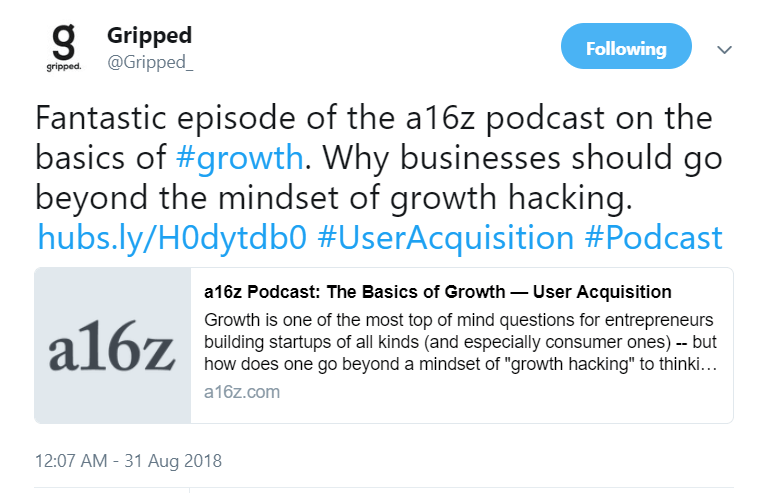Social media is a powerful tool that can connect you with potential buyers and support your sales and marketing efforts. However, when starting out with posting on channels like Twitter, LinkedIn and Facebook it is easy to fall into the trap of writing unimaginative and bland content. Whilst a well-curated, relevant feed can be a fruitful way of driving engagement and visibility, it can be disheartening when your posts are not getting any attention. This article will attempt to show you where you may be going wrong and share some advice on how to get your channels back on track.
Something to keep in mind before you start is that you don’t have to use every single channel. It is more useful to focus on those most relevant to your business. Before even selecting which platform to spend time on, determining your buyer personas will help you select the right channels.
For the greatest impact, consider using accounts outside your company page. Employee advocacy is an important tool, it is worth setting up your own personal channel and encouraging others in your business to do the same, in order to talk about your business and expertise.
Section 1:
What should I post on social media? (Don’t only promote yourself)
First, when setting up any social media channel you must think about what you want to get out of it. The purpose behind your social media channels could be to:
- Promote your company’s content, ensure it’s fair, unbiased and useful.
- Create leads
- Increase visibility
- Establish you as a thought leader
Depending on what you want to achieve, what you post will be different. However, to do any of the above, you need to suggest that you (or your company) are experts in your field and that you are interested and passionate about your industry.
The most common mistake companies and professionals make on social media is only focusing on promoting themselves. It’s important to make sure that your feed is not repetitive. Posting the same kind of content, especially promotional material, will turn people off. You should try and offer people something valuable. That could bean opinion on a recent news topic in your industry or recommending a good article relevant to their field.
Section 2:
Re-sharing content
The first step in making your feed more appealing is to diversify your feed. Don’t just share content that you or your business has created. There is a lot of content out there so there is no point in spending lots of time writing something that someone has already written. Repost interesting material, focusing on an interesting quote, or add a comment that adds something new to it.
Get started by collating a range of sources to fill your feed with:
- Establish key themes relevant to your experience, your industry and your business. You can set up Google alerts for when new content comes out about these key terms.
- Establish influencers in your field. Writing every piece of content on your feed is time-consuming and unnecessary if someone else is sharing valuable insights. Re-sharing their posts and crediting them may also get some engagement from them and start some interesting conversation.
- Find popular watering holes. If there are any particular websites or blogs that produce content relevant to your field, re-sharing their content shows you’re in the loop and when re-sharing you can add your own thoughts on industry news.
- Collate your sources. Feedly is a really useful tool for collating different websites. You can also put links on a Google Doc, or create a Twitter list.
Finding relevant content:
- Sign up to newsletters that will send curated articles relevant to your industry straight to your inbox.
- Websites like Flipboard curate feeds for you based on selected themes and topics so you don’t have to do all the searching yourself.
- You can add GrowthBot to Slack and it will generate articles for you based on topics. Search “Top articles this week on [insert subject]”
- Search key topics on Buzzsumo and it will pull up the most relevant articles.
- Nuzzel tells you what your network is sharing so you can keep up to date on the latest industry news.
- Unsplash is a great source of free images. Whenever you post, make sure that there is an image attached to make it more engaging.
Article continues below.
Section 3:
How to re-share content
When re-sharing content, keep in mind that you want your feed to add value and be engaging for your followers. So, when re-sharing content try to add something. Include something about why you enjoyed the post or what key points resonated with you to give people an understanding of why you are sharing it and why it’s worth reading.When people re-share content, they often just copy and paste the headline, add the link with a few hashtags and tag the author:
Basic: headline + link + photo + hashtags + @author
This is a lazy way of re-sharing content that won’t add much value. Often articles have a re-share button that will generate this format for you – which means loads of other people will have shared the content in the exact same way as you. To stand out, try and add something a bit different.
If you don’t have time, here are some easy ideas:



Section 4:
How often shall I post
Another key to using social media is consistency. The content you share and create might be great. However, if you only share content on a sporadic basis then your followers might become disengaged. Try and be as consistent as possible. There are loads of scheduling tools out there TweetDeck, Buffer, Kuku.io, MeetEdgar, HubSpot that can help you schedule posts in advance and also have helpful suggestions on optimum times to post. There is more advice on the Gripped blog on how social media management tools can improve your social media engagement.
Find a content schedule that works for you. This may take some time to work out but start experimenting with posting times and amounts. Compare week on week and see what number of posts a day (and times) get the best engagement.
A manageable content plan may be posting twice daily on working days, once in the morning and once in the afternoon. To maintain this frequency one post each day can be something from a secondary source, and the other something you have written or something promoting your business. However, don’t post content for the sake of it, it is more important to have a well curated and interesting feed than one that posts frequently but with poor content.
Engaging people on social media…
Tagging people in posts is a great way of driving engagement. Newsfeeds are busy, so tagging someone will ensure they see it and also elicit a response from them. So, if you have written a post that you think is relevant to someone in your network, tag them. When re-sharing content, there is real value in crediting people because they’ll probably like, or even comment, and this will mean your post will be shared with their network.
If there is someone, in particular, that you would like to engage with, try re-sharing something that they have written and tagging them.
If people comment on your posts, make sure that you reply. Followers will feel more inclined to comment if they think that they will get a response from you. Replying can also spark interesting conversations that encourage more people to join in.
For more detailed advice on using social media, check out these posts:
The benefits and challenges of using LinkedIn’s in-house blogging function
The Best B2B Inbound Marketing Channels
How to Promote Your eBook on Social Media to Generate B2B Leads
How to Monitor Social Media for Marketing, Sales, Support and Executives

